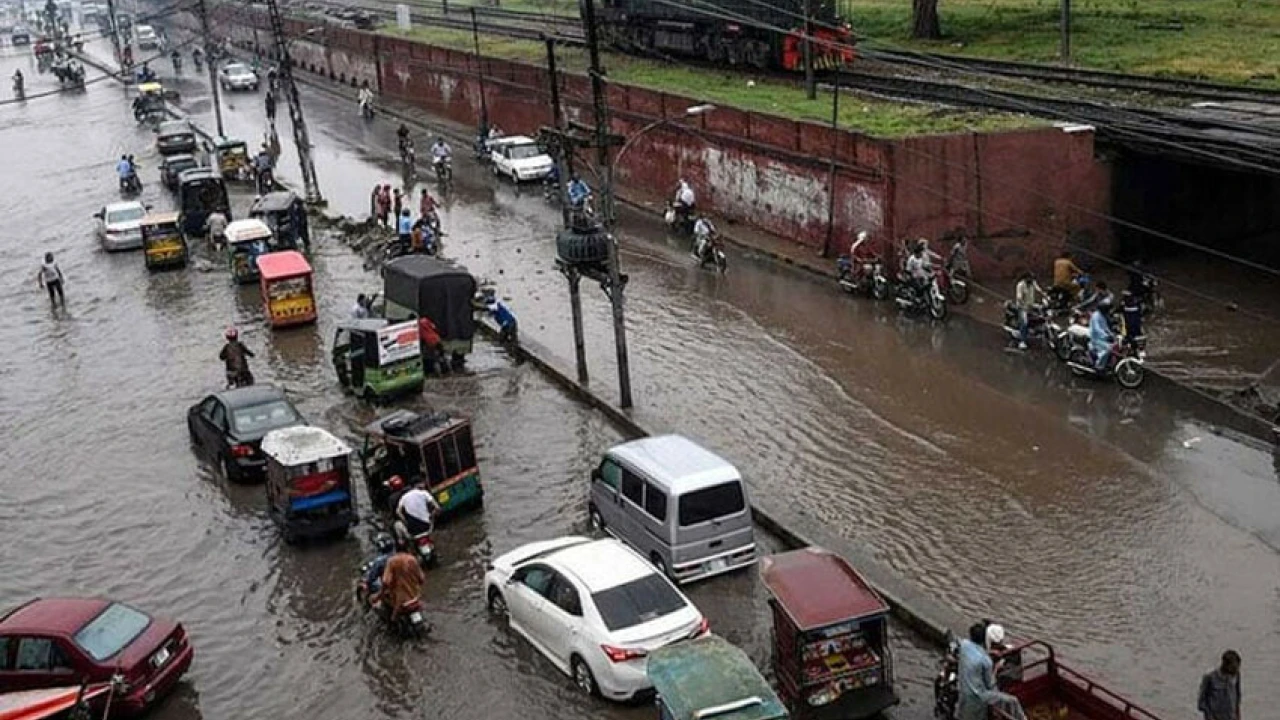30-Year Rainfall Record
Lahore experienced a record-breaking rainfall on Friday, with 315 millimetres of rain recorded in the Tajpura area, surpassing a 30-year-old record.
This deluge left the city inundated with water. Muhammad Ghufran, the Managing Director of the Water and Sanitation Agency (WASA), confirmed the new record, noting that last year, Lakshmi Chowk recorded 291 mm of rain, while this year it received 170 mm.
He assured that WASA staff were actively monitoring the situation and working in the field to manage the water levels.
“The water has been removed from Lakshmi Chowk, and other areas are also being cleared. Soon the city will be free of rainwater,” stated Ghufran.
Various neighborhoods in Lahore received significant rainfall: Pani Wala Talab (151 mm), Qurtuba Chowk (152 mm), Gulshan-e-Ravi (151 mm), Mughalpura (145 mm), Airport (86 mm), Upper Mall (130 mm), Samanabad (153 mm), Iqbal Town (152 mm), Gulberg Town (105 mm), Chowk Nakhuda (155 mm), Nishter Town (162 mm), Jail Road (69 mm), and Farrukhabad (140 mm).
The Meteorological Office has forecast more rain for Lahore over the next 24 hours, potentially exacerbating the water levels. Heavy rainfall also impacted Islamabad, Rawalpindi, and other areas in the province, causing significant challenges for residents.
In addition to Lahore, other affected regions included Islamabad, Rawalpindi, Nikyal, Barnala in Azad Jammu and Kashmir, Gujranwala, Jehlam, Mandibahauddin, Hafizabad, Sargodha, Pakpattan, and their surrounding areas.
These regions experienced heavy showers and consequent power outages. Residents in areas like Rawalpindi’s Dhok Kashmirian, Sadiqabad, and Dhok Kala Khan, as well as Lahore’s Devis Road, Nisbat Road, Gawalmandi, Krishan Nagar, Rajgarh, Mazang, Achara, Faisal Town, Garden Town, Gulberg, Mughalpura, Wasanpura, Badami Bagh, and Shahdara faced significant difficulties due to accumulated rainwater.
In response to the emergency, Punjab Chief Minister Maryam Nawaz Sharif directed the local administration and WASA authorities to take immediate measures to drain stormwater in all affected cities, including Lahore.
She instructed staff and officers to visit vulnerable areas and remain in the field until all rainwater was completely drained.
Additionally, she called on Rescue 1122 and other departments to prepare for emergency situations, emphasizing the need for continuous efforts to manage drainage in main arteries and low-lying areas. She also directed the traffic police to clear roads to facilitate the flow of vehicular traffic.
In Karachi, the Pakistan Meteorological Department (PMD) predicted light rain or drizzle for Friday evening or night. The weather was expected to remain relatively pleasant after a long heatwave spell.
The PMD forecast partly cloudy skies with strong winds. The minimum temperature recorded in Karachi was 30°C, with humidity at 76%, and the maximum temperature was expected to rise to 33-35°C. Sea breezes were reported to be blowing at 27 to 32 kilometres per hour.
The PMD also predicted heavy rains for Karachi after July 20, potentially providing relief from the ongoing hot weather.
I am a dynamic professional, specializing in Peace and Conflict Studies, Conflict Management and Resolution, and International Relations. My expertise is particularly focused on South Asian Conflicts and the intricacies of the Indian Ocean and Asia Pacific Politics. With my skills as a Content Writer, I serve as a bridge between academia and the public, translating complex global issues into accessible narratives. My passion for fostering understanding and cooperation on the national and international stage drives me to make meaningful contributions to peace and global discourse.










